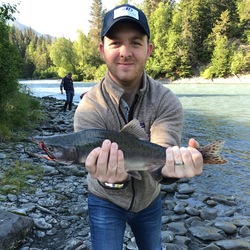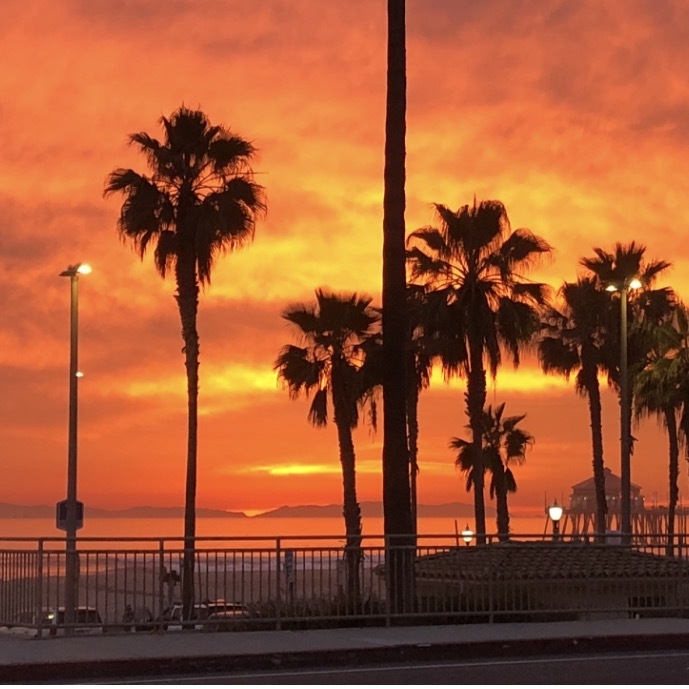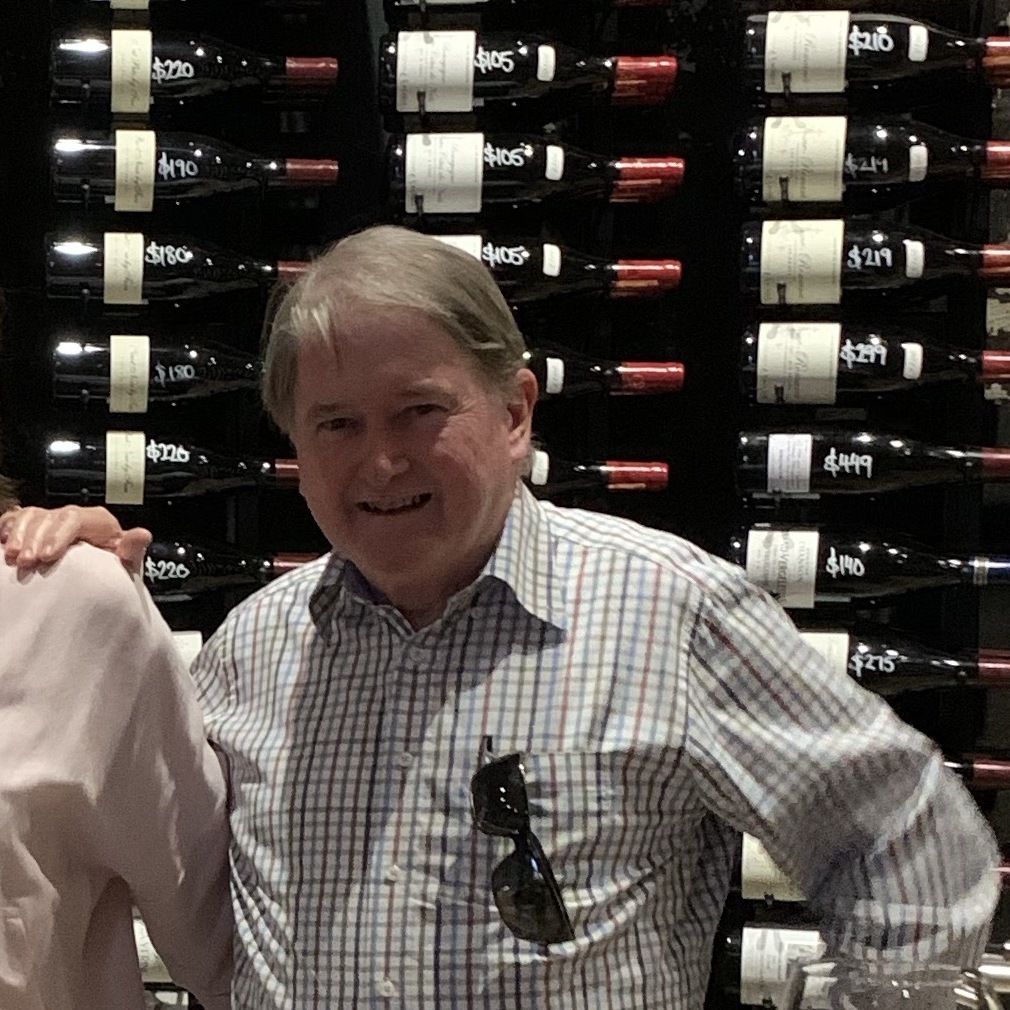The Winery At Bull Run
Rene Rostaing
Ampodium Côte-Rôtie Syrah 2010
The Winery at Bull Run
Virginia Merlot
I'm no connoisseur but bull run has the excellent wine. The merlot is fruity and delicious. — 9 years ago
Antonio Vallana e Figlio
Gattinara Nebbiolo 2004
I bought all of this that I could find.
Some 9+ bottles. It was a wine inexpensive enough to open whenever, and when it was gone I only lamented its passing without coveting. If you run into any in the $30 range, snap them up and drink them. Gattinara at twice the price is unnecessary. Much better than their Spanna. — 9 years ago
La Kiuva
Arnad-Montjovet Nebbiolo 2010
2010. Still an alarming sense of freshness; as though it hasn't budged on some level. A bit more meaty and sweaty, same smoked paprika. Black truffle, bitter orange. Amazing how long these co-op wines can last; but then, I guess that's (mostly) Nebbiolo for you. I consumed just over 2 cases over the years of this. Good run. At first it appeared to have a bitter finish; but without buttery creamy mushroom pappardelle that disappeared so obviously I paired it wrong. Probably best with thinly sliced charcuterie appetizers. — 10 years ago
Marc Mondavi
The Divining Rod Alexander Valley Cabernet Sauvignon 2010
Decant for 2-3 hours. Smooth. Oaky. With late tannin hot, and a berry/jam hint finish. Nice tight finish with a sandpaper tongue at the end. Worth visiting if you run into it. — 10 years ago
Tyler
Bien Nacido Vineyard N Block Pinot Noir 2010
2010 Tyler Pinot Noir Bien Nacido Vineyard. Drank at Tortilla R w K after our trail run. Was really delicious. Drank it slightly cold which was nice on such a hot day. — 11 years ago
Frédéric Magnien
Coeur de Roches Meursault Chardonnay 2007
Lovely dinner at L'epigramme wonderful coud who run the place. Great Lamb and Endive Torte. Cheryl had Frois Gras and Veal — 11 years ago
Seven Hills Winery
Seven Hills Vineyard Merlot 2003
What merlot should be. Black and brooding, this monster needs some air time to show. No apparent loss in 10 years. Black fruit and cedar with some herbals hints with mineral. A complete wine. Could make a strong run at being a Pomerol in a ripe year. Cannot recommend highly enough. Especially if you find it at a good price. — 13 years ago
Hopes End Wine
Run Away To The Dark Side To A Place Called Port Misery Shiraz Blend 2016
Pretty solid red blend for $9.99 at Martins. For the price, it's one of the better wines. — 8 years ago
The Winery at Bull Run
Reconciliation Red Blend 2015
My favorite wine at Bull Run — 8 years ago
Château Pichon Longueville Comtesse de Lalande
Pauillac Red Bordeaux Blend 2005
Pichon Lalande is my favorite 2nd growth with a steak. Yup...it's #SteakandClaret night to quote my buddy Gary Westby. Further, it's certainly one of my favorite producers period. I've waited for this wine to be in the bottle for 10 years before finding out definitely how good it was or wasn't. You see, the 05 Bordeaux vintage was exceptional. It's drinking right now better than 00. 00 may turn out to be better, but not for some time. The real issue was the division of scores between RP & NM. Parker had this as low as an 86 and now has it at 89. Neil Martin has been consistently at 95-96. I found it simply inexplicable that Pichon Lalande could have bombed in such a great vintage. Tonight, I know they didn't. This wine is beautiful. Although, I don't believe it will cellar as long as their some of their very best vintages and many others I've enjoyed. On the nose, bramble, ripe blackberries, dark cherries, notes of blueberries, poached strawberries, graphite, baking spices, cedar, lightly perfumed violets and dark, fresh & dry red flowers. The body is medium-medium plus, tannins nicely resolved with 10 years to be completely resolved. Fruits of; ripe blackberries, dark cherries, notes of blueberries, poached strawberries and pomegranate with a whiff of spice. There's notes of dry bramble, soft leather, fresh violets, graphite, cedar, dry stones, dark rich earth, limestone, tobacco, spice-box, vanilla, very light cinnamon & nutmeg. The finish is very long, elegant, ripe, round, smooth, good acidity and beautifully elegant...50-50 earth & fruit. I bought more bottles of this at $85 after it's was first released in futures and I do not regret it. $85 is proving to be a steal for this wine when it normally sells for between $100-$150 a bottle and higher. Might heavy up further after tonight if I find more around the same price. Oh yes...I'm with NM on the scoring. Photos of the Chateau, estate vines, newer tasting room & the Virginie de Pichon-Longueville, Comtesse de Lalande. Forgive my long post, but my passion and love for this producer is profound. Producer history and notes...as I wrote in an earlier post for Pichon Baron, Pichon Baron and Lalande started as one entity. The first mention of what is now called Chateau Pichon Lalande was the creation of Pierre de Mazure de Rauzan. Pierre de Mazure de Rauzan is responsible for forming many of the top Bordeaux estates today. Pichon Lalande was given its name when Therse, the daughter of the founder received the estate as a dowry when she married Jacques de Pichon Longueville. Pichon Lalande was essentially managed by three women, Therese de Rauzan, Germaine de Lajus and Marie Branda de Terrefort. On the eve of his death in 1850, Baron Joseph de Pichon Longueville divided the property between his five children. His three daughters received Pichon Lalande and his sons Pichon Baron. What happened next was Virginie, the wife of the Count of Lalande took over the management of the estate under the name of Comtesse de Lalande. In 1850 she commissioned the popular, architect Duphot to build a residence inspired by the Hotel de Lalande, located in Bordeaux. Without heirs, Pichon Lalande passed down from aunts to nieces. Following World War I, the Miailhe brothers, bought Pichon Lalande in 1925. They were the ones who planted even more Merlot. May-Eliane de Lencquesaing, the daughter of Edouard Miailhe became the new owner and general manager of Chateau Pichon Lalande in 1978. She expand the size of Chateau Pichon Lalande from 40 hectares to it's current 89 hectares. Chateau Pichon Lalande remained in the same family for more than 250 years! In fact, over three centuries, only two families have owned Pichon Lalande. May-Eliane de Lencquesaing sold Pichon Lalande to the owners of Roederer Champagnein in January 2007. This family-run company is managed by Frederic Rouzaud who owned several other wine estates in Bordeaux; Chateau Bernadotte, Chateau de Pez, Haut Beausejour and Chateau Reaut la Graviere. He sold Chateau Bernadotte in December 2012. In February, 2011, Sylvie Cazes was named the director of Chateau Pichon Lalande. She replaced Gildas d’Ollone. Sylvie Cazes was replaced in 2012 by current Director Nicolas Glumineau, who was previously at Chateau Montrose. In 2012, Pichon Lalande renovated the estate with a budget estimated at over 15 Million Euros. The new facilities included; building of a new underground barrel aging cellar and several new buildings...one that houses their new tasting room as shown. This renovation provided numerous improvements in their wine making. Most importantly, in the vinification. They created a new, triple tiered, cellar where everything moves by gravity. They also added numerous new, stainless steel, temperature controlled, double skinned vats. These new vats allow Pichon Lalande to vinify on a parcel by parcel basis as well as get much softer & gentle extractions. The 89 hectare vineyard of Chateau Pichon Lalande is located adjacent to Chateau Latour and and across the road from Pichon Baron. The terroir of Chateau Pichon Lalande is deep gravel with clay and limestone soil and is planted to; 61% Cabernet Sauvignon, 32% Merlot, 4% Cabernet Franc and 3% Petit Verdot. — 8 years ago

Stag's Leap Wine Cellars
Artemis Napa Valley Cabernet Sauvignon 2012
Deep red fruit and spice on the nose and coming through on front mouth first blush showing more dark cherry than black fruit (all still slightly tight post aerator-corked bottle pour).. It seems well-balanced with tannins showing slowing the final downhill run offering that finishing touch and back-end memory. This wine shares classic Cali cab notes with slightly brightened fruit, all of which will benefit from a few years in the cave followed by some playtime in a broad-bowled decanter, where its truth will thereafter come to the table.
PS, my guess is that the spice on the nose is largely the result of some newer oak bathing😎 PSS, back @ Matt & Mindy's fabulously folky yet scrumptiously sophisticated Friendly Market just off the bike trail (emphasis added) where you will find very special stuff soundly local with influences from Quebec to NC, at least! 100 years...🌀🌲 — 10 years ago
The Winery at Bull Run
Petit Verdot 2013
Dry, but full bodied. It would likely pair well with a hardy stew. Winemaker's tasting notes: "This rich and savory red emulates flavors of blackberry, black cherry and black plum notes with hints of vanilla and spice. Dry and tannic due to thick skins, this wine finishes with a long smoky wood finish. Aging potential 5-10 years." — 10 years ago
Roots Run Deep Winery
Hypothesis Napa Valley Cabernet Sauvignon 2012
Tasted with Josh at M wine cellar — 11 years ago
Barlow Vineyards
Unfiltered Napa Valley Merlot 2007
Scoring big this evening, as this Calistoga 100% merlot is a spice fest for one's nose reminding me of an early morning forest run, breaking out into a fresh meadow, where I scoop up a handful of blue an black berries and engage. Very cool! Buy this wine!! Also, the fresh, raw kale Ceasar at Il Palio is right-on..:)!
— 11 years ago
The Winery at Bull Run
Virginia Norton 2012
Wow. Loved it! Not trying to sound like drama queen, haha — 12 years ago
Sophie and Thierry Chardon
Les Chardons Touraine Sauvignon Blanc
Not 'run of the mill' at all - crazy stamina - been open for 3 day and still beautiful. — 12 years ago
Covey Run
Columbia Valley Riesling
Had this at Sip with my wife. Would definitely have again! — 8 years ago
The Winery at Bull Run
Meritage Red Bordeaux Blend 2014
Meritage Reserve 2014- wine club pick up 12/17. strong tobacco and licorice flavor. — 8 years ago
Jamiesons Run
Billy's Shadow Cabernet Sauvignon
Good body, sweet at the front, dry finish, fruity notes — 8 years ago
Paul Bara
Spécial Club Grand Cru Brut Rosé Champagne 2012
This run of about 13 PHENOMENAL wines I'm posting are from the SQN wine dinner/WNH interview I did at @Shawn R 's house last night. I was like a kid in a candy store on Christmas. What an absolutely EPIC night! Love ya brother!
Ok, so, wow, you know the night is going to be insane when this is the welcome sparkler! Rosé champagnes are becoming a favorite of my wife and I and Shawn seems to be the man when it comes to them. I've never had Krug Rosé, but I can't imagine it being better than this. The fresh strawberries, kiwis and knock your socks off acidity on this made me a believer in this stuff. — 8 years ago


Le Macchiole
Bolgheri Rosso SuperTuscan Blend 2007
Black cherry, cassis and cedar. Integrated tannins at this point. Developing nicely with a few more years to run. — 9 years ago
Chestnut Run Farm
Spiced Sweet Asian Pear Wine
We actually just picked up this bottle at the Riverwinds wine fest. It's so good and perfect with sushi — 9 years ago
Caymus Vineyards
Napa Valley Cabernet Sauvignon 2014
Wax on, wax off: this evening I took a rare field-trip to Waxhaw, which is way beyond my typical radius of existence. I had planned an anniversary dinner at Heritage, and my good friend "Coach Witty" encouraged me to run a mile race with her at track night in those parts beforehand (why not run a 5min race right before a nice dinner?!) I ended up winning and getting a PR, and Heritage was worth the trek. Food Babe walked in and sat down next to us - hopefully she only had good things to say about Paul Verica's passion project, as I loved it!! As for the wine...I have been asked, "what's a good wine to give as a nice gift?"....and I often suggest Caymus cab. It's always solid, a fruit bomb, and elegantly-finished. A known quantity. Perfectly paired with the local summer vegetables and my steak. And last but not least, let's all raise a glass to Pat Summit - the winningest coach in D1 history to date - that certainly gains my respect. May her legacy live on #caymus #theextramile — 9 years ago

The Winery at Bull Run
Pinot Gris
Enjoyed during a birthday celebration! — 10 years ago
Massena
The Moonlight Run Red Rhone Blend 2006
Tawny rim, lovely perfume. Great rendition of a southern Rhone style - Grenache Shiraz Mataro Cinsault. Full and concentrated even at 9 years. Delicious jubey flavours. Losing a half point for an overly heavy bottle. 18. — 11 years ago
The Winery at Bull Run
Viognier 2013
One of my favs - local VA wine at it's best. Buttery with a hint of coconut. Perfect for drinking outside on a hot day.
— 11 years ago
San Giuseppe
Riserva Chianti Classico Sangiovese 2006
Mirjam returns to run the marathon w/Jochem, Bart & her parents at Trattoria Alba! — 12 years ago















Somm David T
Independent Sommelier/Wine Educator
2010 was a very good vintage in Rhône. Rostaing is a well know producer with people that know and drink Northern Rhône wines, not so much with others that do not. The Ampodium is the entry level into Rene & Pierre Rostaing wines. It is a blend of 13 vineyards in Northern Rhône. They are simply one of the very best producers in the region. I spent an afternoon with Rene & his son Pierre tasting in the their cellar and in their La Landonne vineyard as shown in the photos. The 2010 is drinking beautifully with many good years ahead. On the nose; ripe & slightly stewed/baked fruits of; blackberries, dark cherries, strawberries, creamy raspberries, stewed plum, black raspberries, cherries, steeped fruit tea, dry crushed rocks, iron pan, some white & black pepper, bacon fat, grilled savory meats, pork, black licorice, black cherry cola, decayed & fresh red florals with violets. The body is round and medium full. The tannins round, still a little chewy & around 55% resolved. The length, texture, tension and balance are in near perfect harmony. The fruits are; round, ruby & ripe; slightly stewed/baked fruits of; blackberries, dark cherries, strawberries, creamy raspberries, stewed plum, black raspberries & cherries. Steeped fruit tea, dry crushed rocks, chalky minerals, iron pan, coffee grounds, spice, some baking spices w/hints of vanilla, white & black pepper, drying blood, dry herbs/bay leaf, dry stems, moderate levels of bacon fat & pork, grilled savory meats, black licorice, black cherry cola, decayed & fresh red florals with fresh violets for days. The acidly is round and dripping. The long finish is plush, velvety delicious and lasts & lasts. In good vintages, I would put this in blind with the best of of the best new world wines from any vintage that many love; SQN, Booker, Saxum, Alban, Cayuse, Horsepower etc.. I’d bet most of you would pick it over these producers that cost much more $$$. It’s simply one of the best pound for pound wines/producers for this varietal. Especially, for the $$$. Wow, what a wine for the $. $55 upon release. Photos of; Winemaker Pierre Rostaing and our group in their La Landonne vineyard, the small sign that barely identifies their Estate, an example of the Quartz mineral that runs throughout their La Landonne vineyard and the view back onto the river from the top of the very steep La Landonne Vineyard. Producer notes and history...Rene Rostaing produced their first wine in 1971. However, it took almost three decades before wine became a full time occupation for Rene Rostaing. Domaine Rene Rostaing came about through marriage. The wife of Rene Rostaing was the daughter of the famed Cote Rotie grower, Albert Dervieux, and the niece of Marius Gentaz-Dervieux who gave Christine the vineyard land that became the Northern Rhone estate for Rene Rostaing. Through inheritance from Albert Dervieux Thaize (his father-in-law) who retired in 1990, and from Marius Gentaz Dervieux, his uncle, Rene Rostaing expanded his holdings, giving him some of the best terroir in Cote Rotie. The new vineyard land was basically 3 small parcels in the La Landonne, Cote Brune and Vialliere lieux-dits. This initial expansion from his initial tiny parcel, allowed Rene Rostaing to change careers and become a full time vigneron. Since 2007, the estate has managed by Pierre Rostaing, (son) of Rene Rostaing. Currently Rene Rostaing owns 7.5 hectares of vines that is spread out among 20 different parcels located in 14 locations. Perhaps the most celebrated vines of Rene Rostaing are the 1.6 hectares of vines they own in the La Landonne vineyard (photo). On La Landonne, the vines are more than 60 years old. Some vines are even close to 100 years of age! Those are his largest holdings. The smallest vineyards of Rene Rostaing are located on Cote Blonde. Rene Rostaing also has vines planted in; Fonjean, La Vialliere, Le Plomb, Bouchare, Leyat, La Roche and La Tupin. Their oldest vines are more than 70 years old and are used for Rene Rostaing Cote Blonde. The majority of those plantings are on the steep hillsides with mica, schist and rocky soils. 25% of those vines are closer to the bottom of the slopes and on the flats. Rene Rostaing remains a traditional Cote Rotie producer who is not among the last to harvest. His wines are aged using very little new, French oak barrels. On average, Rene Rostaing Cote Rotie are aged in about 10% new French oak barrels. Rene Rostaing produces 4 different Cote Rotie wines. Rene Rostaing Ampodium, which was previously known as Rostaing Cuvee Classique, is a blend of 13 sections of different vineyards, but it does not include their best holdings on La Landonne or Cote Blonde. The fruit for Rene Rostaing Ampodium has at least 40% or more of the stems removed and run between 12-13.5% abv. The wine is usually made from 100% Syrah and is aged in an average of 15% to 25% new, French oak barrels. The amount of new oak can be less, depending on the character of the vintage. About 1,750 cases are produced each year. The wine is no longer called Cuvee Classique, the name was changed to Rene Rostaing Ampodium with the 2009 vintage. Rene Rostaing La Landonne comes from a terroir consisting of sands with iron oxide and traces of quartz. This wine is always produced from 100% Syrah. The grapes are partially destemmed, with about 10% to 20% of the stems removed, depending on the vintage. There are vintages when no destemming takes place. The remainder of the grapes are whole bunch fermented in stainless steel vats. Rene Rostaing is not a believer of using too much new oak for the aging, which on average uses 10% new, French oak barrels and the remainder of the harvest is aged in demi-muids (600 liter) and French oak barrels. This wine is like most wines from La Landonne, masculine and meaty in character, requiring at least a decade to soften and develop. On average, Rene Rostaing La Landonne produces less than 600 cases depending on what the vintage delivers. Rene Rostaing Cote Blonde is perhaps his best. It’s produced from a blend of 95% Syrah and 5% Viognier. The grapes are co-fermented. The vineyards is planted in the region call Arzel. Arzel is a poor, mineral laden soil with deposits of Silex and Mica on a steep hillside. The vines are more than 50 years of age. The grapes are partially destemmed…35% to 50% of the stems are removed. The remainder of the grapes are whole bunch fermented in stainless steel vats.
The remainder of the harvest is aged in demi-muids. This one is the hardest to find and most collectible of all their wines. In fact, they only produce close to an average of 350 cases of Cote Rotie in most vintages. Rene Rostaing Cote Brune made its debut with the 2013 vintage. The vines were once part of the holdings of Marius Gentaz, which eventually passed to Rene Rostaing. Rostaing replanted those vines in 2000. Made from 100% Syrah. — 8 years ago